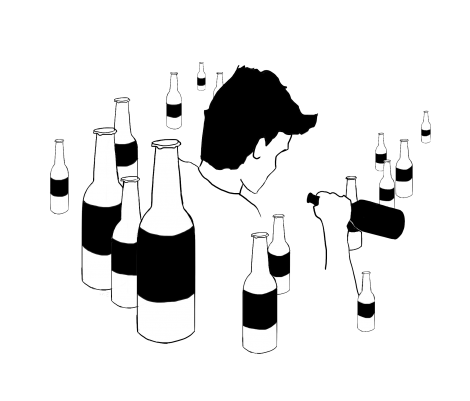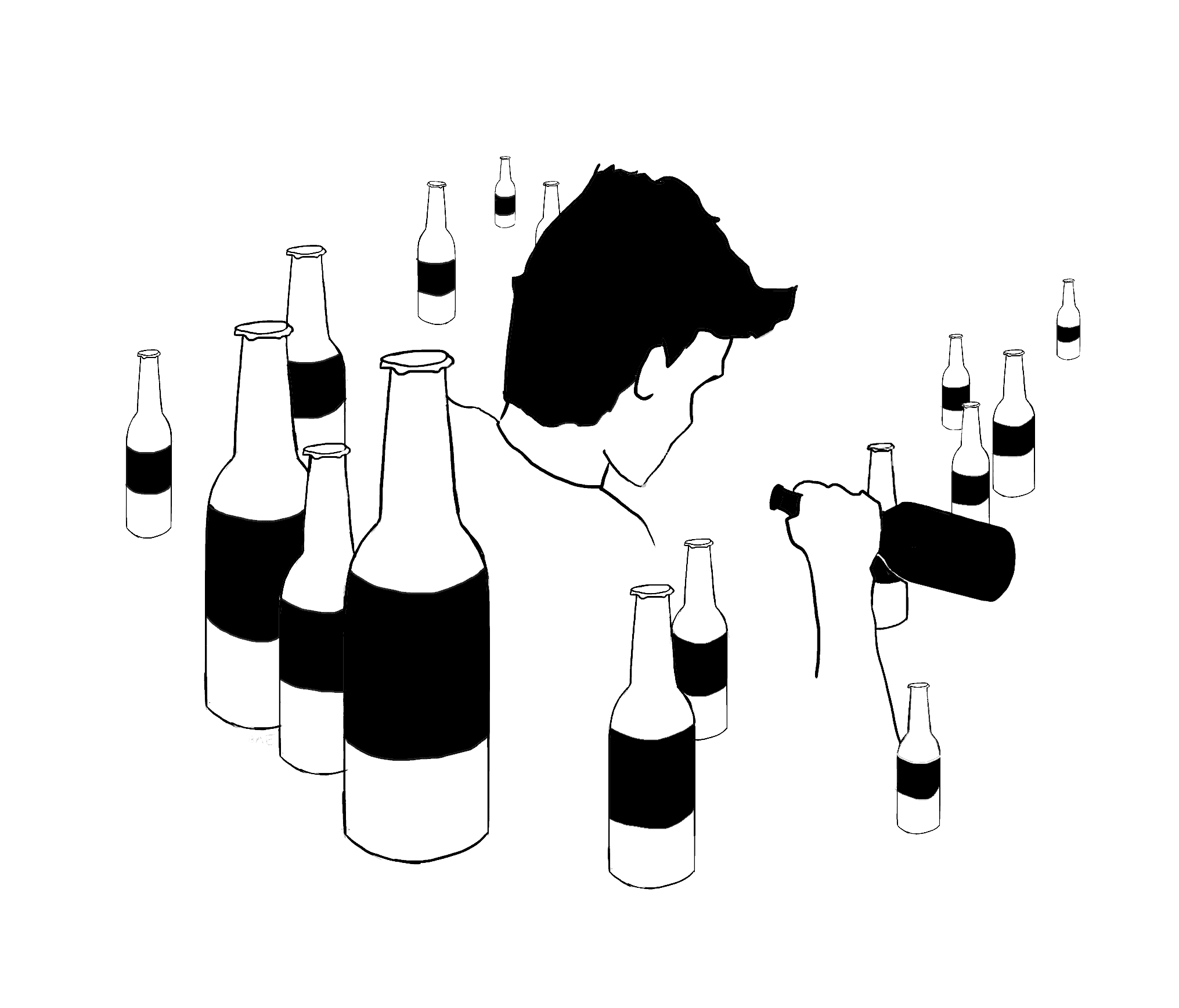
MINHEE BAE/THE VARSITY
You find yourself lost in the wilds of Toronto with a couple of friends. Far from campus, you and your buddies decide that you wouldn’t mind a little light refreshment. Spotting what appears to be a dive bar, you head inside to order a pint or two. But the moment you cross the threshold, you notice that something is amiss. You can’t put your finger on it, but there’s a general malaise, a lingering sense of anger in the air. Perhaps it’s the bylaw-infringing smell of tobacco smoke, or that the bartender is drunker than any of the patrons, or perhaps it’s that a number of customers are asleep or crying. Whatever it is, your adrenaline starts pumping and your sphincter tightens into a knot.
You have just stepped into a murder bar.
This is quite different than your average dive bar. Dive bars are an important and healthy part of any neighbourhood dynamic — they are a vanguard against the all-consuming forces of gentrification — a sign that a neighbourhood still has some balance in regards to mixed income. After all, not every bar can serve seven-dollar pints of local craft brew and artisanal cocktails.
A murder bar is a far more insidious beast. Often located near mental health facilities, probation offices, or homeless shelters, murder bars are almost predatory in nature. Proprietors eschew any kind of moral standard in favour of profiting off the mentally ill, the desperate, or whoever else wanders into their web of misery and alcohol. Entering one, you get the distinct sense you may not leave in one piece.
Some murder bars are deceitful in nature. I’ve seen one that disguises itself as a karaoke bar, hiding its true nature behind images of pop music and joyous sing-a-longs. It is always empty, but if a person tries to enter, they are shooed out angrily with the words “Private party, private party!” as strange noises and cigarette smoke emanate from the back room, a mysterious place guarded by a ratty looking curtain. I have been tempted to return, to challenge those gatekeepers and to explore the secrets of the mysterious back rooms, but I worry that I would be lost forever to its dark secrets.
Others are parasitic. In Parkdale I encountered a bar that was once a gourmet Eastern European restaurant. When ownership changed hands in the late 2000s, a murder bar grew from its inside and burst out like a booze-infused variation of the movie Alien. When I went — seeking cabbage rolls, as is the custom of my people — the only sign of its former glory were photos of Belgrade on the wall. The windows were painted black, though poor workmanship and age allowed an eerie orange mosaic glow to filter though the cracks and shoddy brushstrokes.
I left quickly. I did not order any cabbage rolls.
These bars exist, dear reader, and if you find yourself in one, I would advise you to act as if everything is perfectly natural, and mimic the actions and behaviours of the other patrons. Do not make any sudden or unexpected movements. When startled, a murder bar’s own customers act as antibodies and will attempt to expel any outsiders. Be ever vigilant, browse yelp regularly, and learn to recognize warning signs, such as covered windows, the flagrant disobedience of indoor smoking bylaws, and an ever-present malicious aura.


